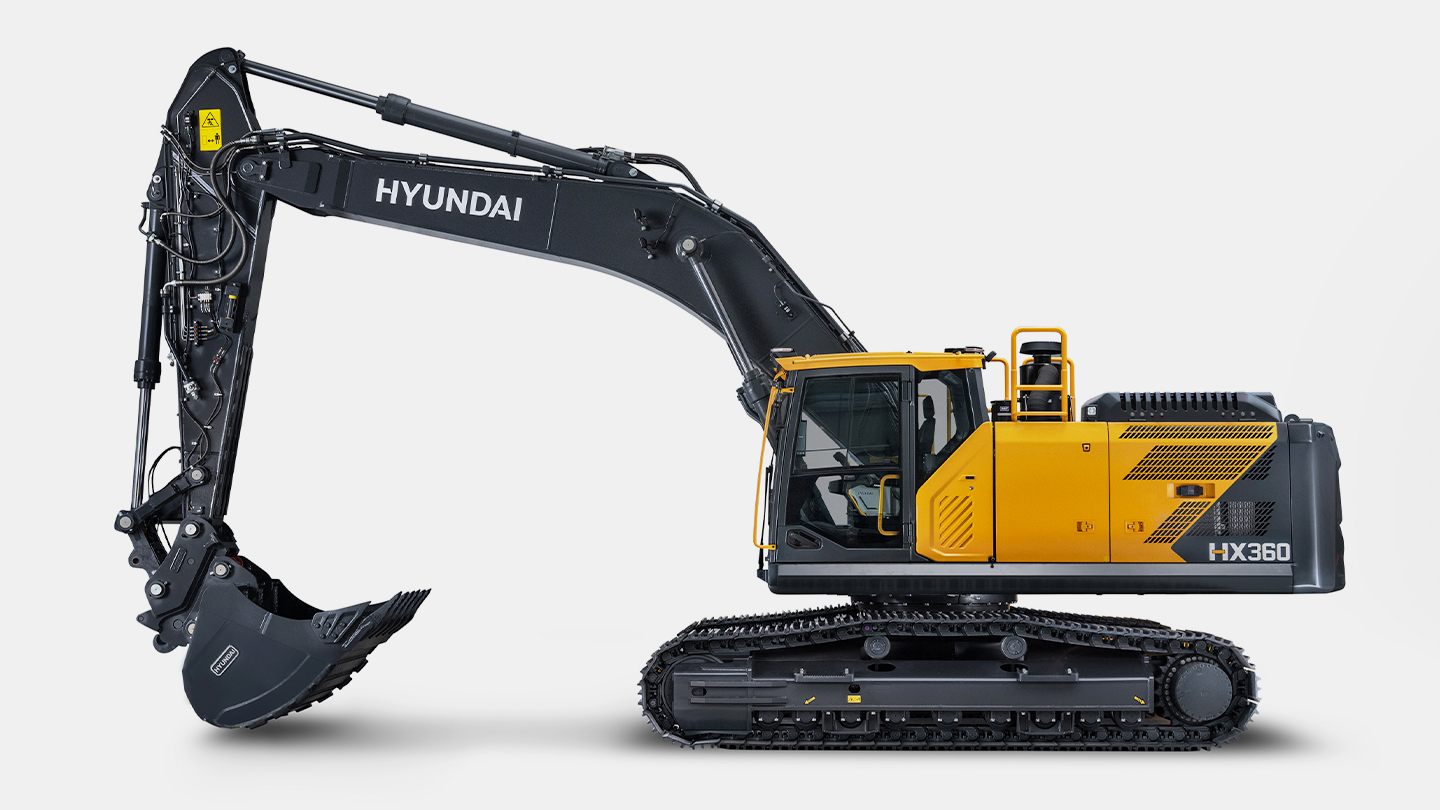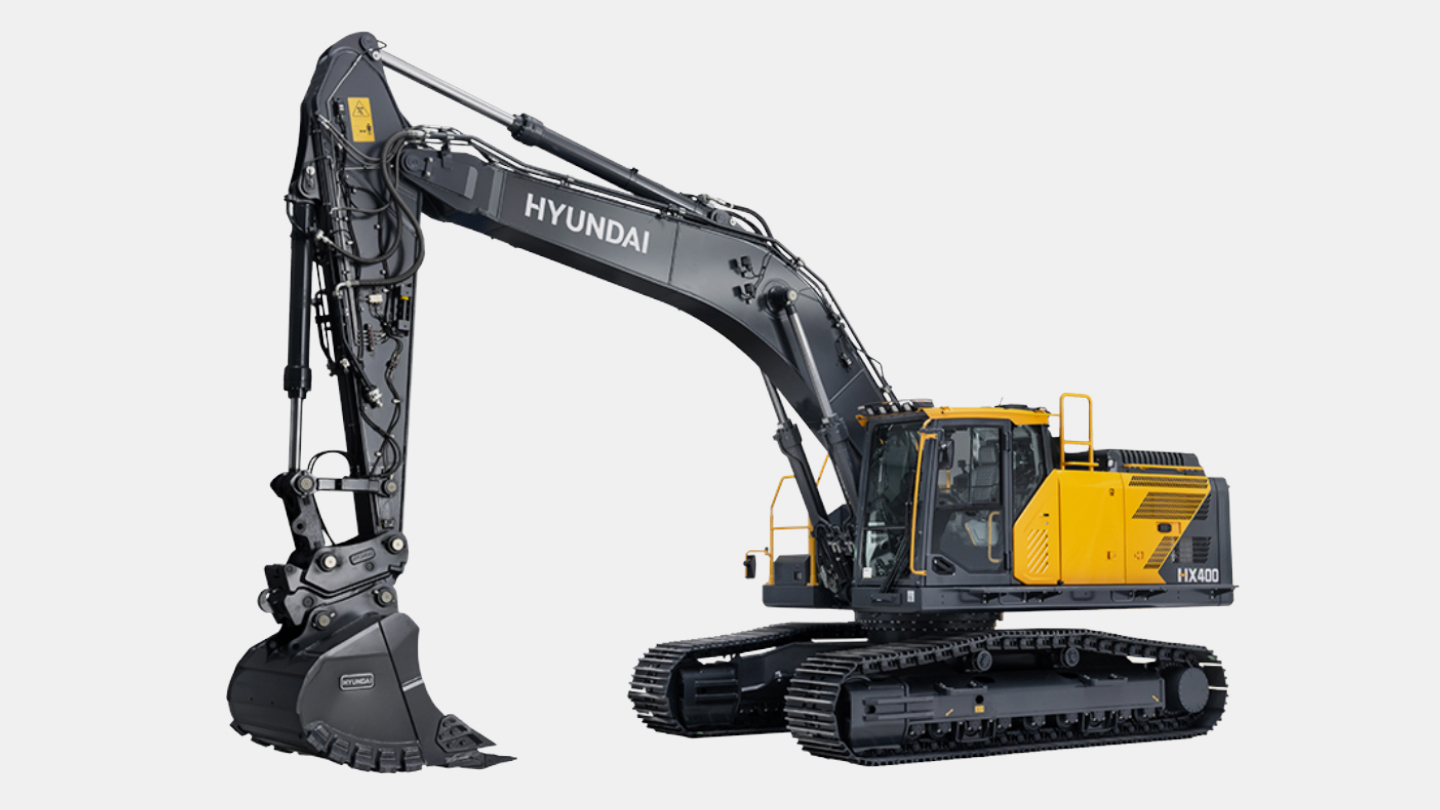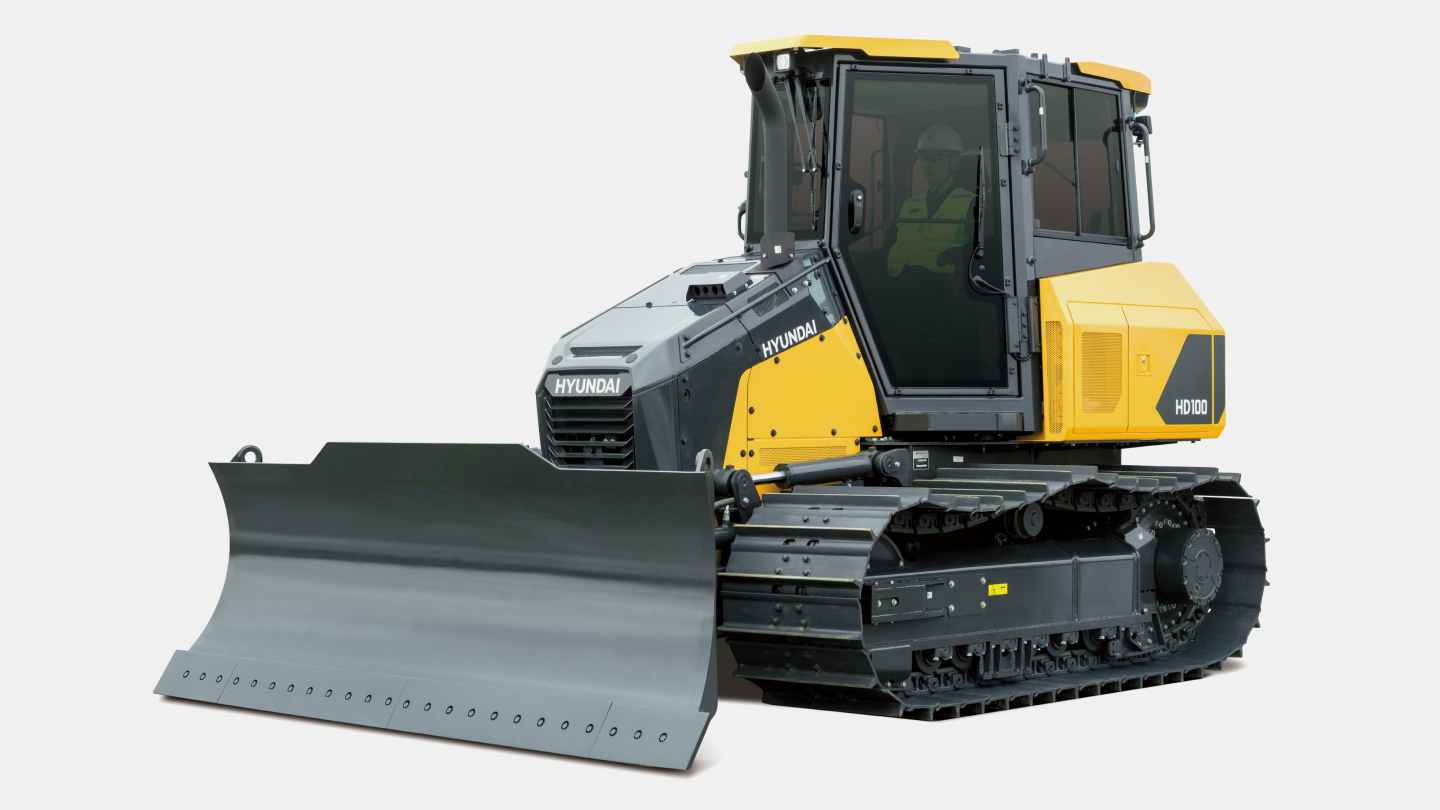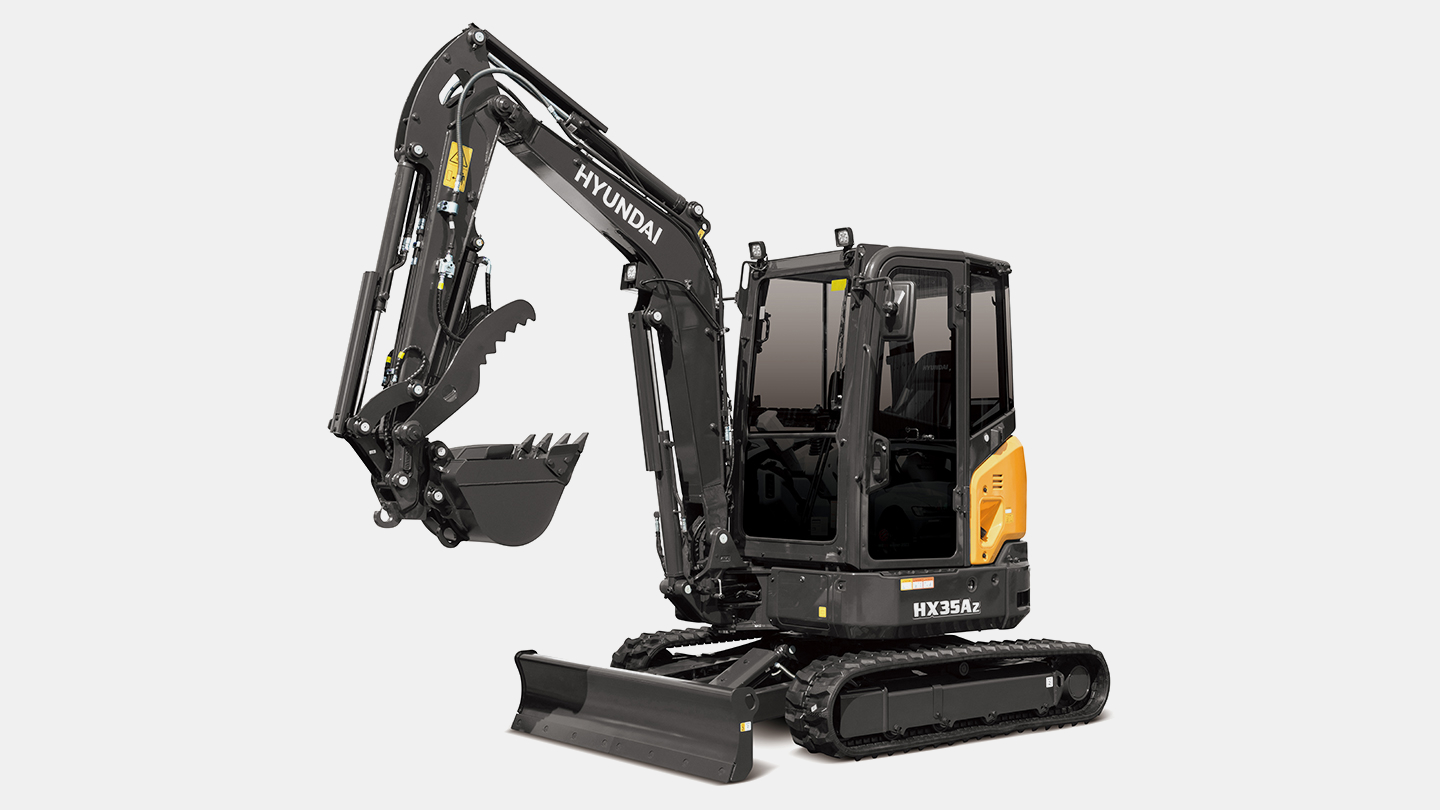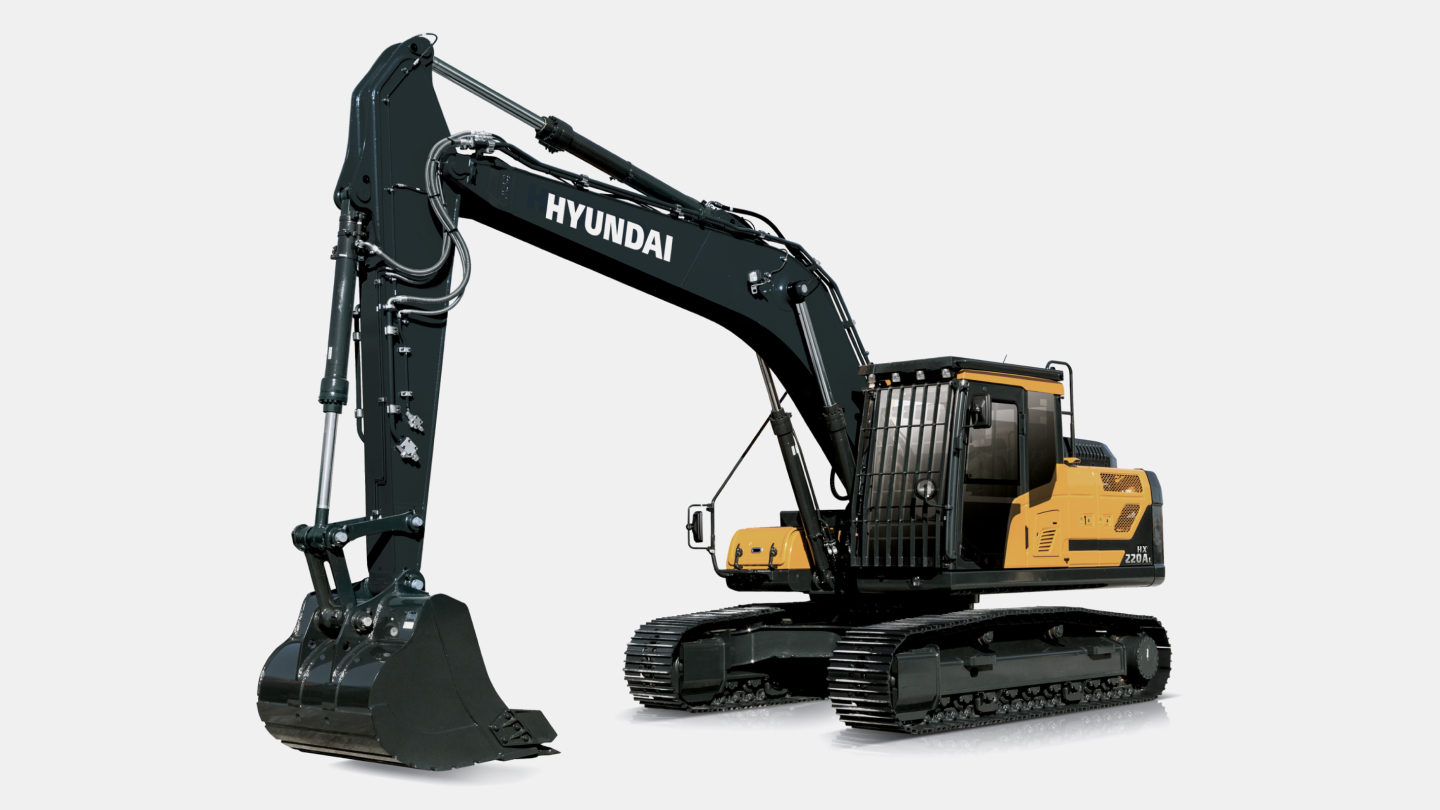HD Hyundai Construction Equipment's mobile website is optimized for portrait (vertical) view.
HCE ISSUE
Interview with Seung-hwan Jo, Senior Managing Director and CSEO of HCE
2021-08-03
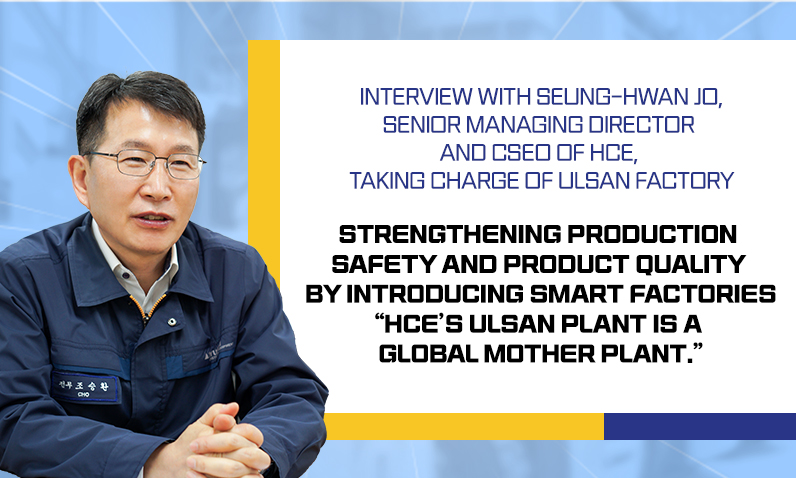
[HCE People] Interview with Seung-hwan Jo, Senior Managing Director and CSEO of HCE, taking charge of Ulsan Factory
Strengthening production safety and product quality by introducing smart factories
“HCE’s Ulsan plant is a global mother plant.”
Since opening the Construction Equipment Development Office at Hyundai Heavy Industries (HHI) back in 1985, Hyundai Construction Equipment (HCE) built numerous plants in Korea and abroad over the course of 15 years. By the 2000s, it grew into a global company that boasted 247,933m2 in plant area capable of producing 50,000 pieces of equipment per year.
Today, we introduce a veteran HCE executive who joined the company in 1991 when the plant expansion campaign was in full swing after the company split from HHI as an independent company, Hyundai Heavy Equipment Industry. For thirty years, he has built a high-quality, safe production system and contributed to the growth and development of HCE.
Meet Seung-hwan Jo, Senior Managing Director and the Chief Safety & Environment Officer of HCE, and responsible for overseeing HCE Ulsan Plant.
The Ulsan Plant has achieved numerous innovations in quality and technology and maintains the world's best quality competitiveness based on the ISO 9001 certified quality management system. The plant is spreading its highly reliable production and quality management system built on automation and ICT through smart factory construction projects.
As the manager of the Ulsan Plant, Jo has built a safe production and quality management system that places the highest priority on the responsibility of human workers. Today, he is building smart factories to transform outdated facilities into advanced ICT convergence facilities, while maintaining existing processes and manpower, and reducing human errors to boost production efficiency, respond to quality issues early on and create a safer production environment.
Now, let’s listen to Senior Managing Director Jo about the present and future of the Ulsan Plant.
Q. You have been leading production management for many years before becoming the CSEO. Tell us about your experience at HCE. Can you start by sharing the company's history?
A. I have spent over three decades working in the production management and production technology fields since I first joined the company in 1991. Now, I am very proud of having contributed to the improved production capacity and growth of HCE as a construction equipment production specialist.
As for company history, HCE has been growing steadily since its spin-off from HHI in 2017. This was possible because of the great teamwork and strength of HCE employees who have focused on the safe and efficient production of construction equipment. In recent years, the company has accelerated its growth. In 2011, the Ulsan plant recorded a production volume exceeding 20% of our initial goal. It was a milestone year for company performance when we won enormous orders from China. I remember running the plant 24/7 non-stop and focusing on delivering top-quality products. The spirit of craftsmanship and Ulsan employees' positive attitude of welcoming new challenges has led to such an amazing result.
Q. I assume you have made exceptional efforts to manage the safe production and quality management system at the Ulsan plant. What are the Ulsan plant’s exclusive know-how and strengths that it has accumulated over the years?
A. Both the Ulsan plant and HCE put their best efforts in completing their tasks and delivering the highest possible performance in a family-like atmosphere. There are less than a thousand employees working at the Ulsan plant. We know all employees very well and always communicate with union members, maintaining favorable relationships with them. We have a family-like work environment where safety of production workers is the top priority to create a safe production environment. Each and every worker has expert knowledge in, and commitment for quality production and are manufacturing products with the world’s best quality. These are key drivers to the future development of Ulsan Plant. It is regrettable that we missed our annual event due to the pandemic. It used to be an exciting event where we invited our employees' family members, so I am looking forward to meeting them when the pandemic is over.
Q. The quality management system of the Ulsan plant plays a crucial role in customer satisfaction with HCE products. How has quality management leading to customer satisfaction been performed at HCE?
A. When it comes to quality, the most important thing is to be careful when taking the first step. The HCE’s Ulsan plant is also managing quality with a goal of eliminating the inspection process. If you produce a badly cut steel plate in a steel structure production, you are bound to face a series of issues down the road. You just can’t make a good product. As the saying goes, a stitch in time saves nine. What I always emphasize is ensuring the quality of your designated process. Our teams are working hard to put this into practice at production sites, and they make sure to check for quality for the 10 seconds they work and 10 seconds after work.
This is a critical practice to ensure zero defects. Mistakes made in the manufacturing or assembly process are often impossible to resolve in the inspection process. You must work with your back against the wall. By delivering consistent quality through automation, performing real-time quality monitoring and tackling the root cause of defects via inspection data analysis, we will achieve the goal of zero defects.
Q. Safety is directly linked to the lives of workers in the production process, so you can say it is the value with the highest priority. What do you think are the key elements of a safe production process?
A. If you can’t guarantee safety, sales volume is only temporary. As an officer responsible for production, creating a safe work environment is in itself a top priority. A production environment that ensures the safety of workers positively affects the quality mindset of the workforce. A workplace that places great importance on the question of how goods can be produced safely, over the question of how many products can be produced in a short period of time, greatly influences the mindset of workers when they take responsibility for product quality.
HCE CEO Ki-young Kong stresses that you can’t be happy at work if your family is in trouble. Likewise, the productivity of the Ulsan plant will only be high when our workforces are safe and sound.
The Ulsan plant encourages all employees to ensure safe, high-quality production through intensive weekly training. We are expecting to achieve sustainable growth by forming a trinity of safety, quality and productivity. In addition, we strive to prevent human errors (abnormal operations, forced work) and problems in the physical environment (unstable equipment), which account for approximately 90% of all causes of accidents.
roduction and quality competitiveness exclusive to the Ulsan smart factory>
The Ulsan plant introduced automated facilities and ICT convergence technologies to improve the production process for high-quality products and lower costs. The move was made in response to a new global manufacturing paradigm that brings about exponential growth in productivity by introducing cloud, robots, big data and AI technologies.
This reduced human error and increased the credibility of production processes and quality.
So far, we have completed the first stage, under which we set up automated system for collecting and visualizing production-relavant data. By 2023, we plan to reach the second stage where we will have solved quality issues based on data analysis and achieve process optimization. By 2025, we plan to create an integrated, autonomous operation system for plants in Korea and abroad.
“The fact that we can produce a larger volume of products by building smart factories that use the same resources without expanding the existing process or workforce is the strength exclusive to HCE that has been acquired from years of experience.”
― Seung-hwan Jo, Senior Managing Director and CSEO for HCE Ulsan Plant, HCE.
Q. What led HCE to introduce smart factories, starting with the Ulsan plant in 2018?
A. HCE implemented a smart factory construction project in 2018 to boost the production competitiveness of its construction equipment. While smart factory technology has already been introduced in the construction equipment industry, we are pursuing differentiated strategies to set up and expand smart factories in phases. With these goals, we aim to bring about noticeable effects in process reliability, production efficiency and quality.
Q. What makes HCE's smart factory different from other competitions?
A. HCE is improving its production competitiveness by implementing the automation of Industry 3.0 and ICT convergence of Industry 4.0 simultaneously. We saw that the number of processes and workers do not decrease after deploying ICT technology in all fields—production, assembly, materials and inspection—but rather dramatically increase production efficiency.
The biggest difference was that the production process and product quality were managed very well with greater stability through reliable big data collected from our facilities. The greater the uncertainty generated by human errors in data-driven production systems, the more difficult it is to perform data analytics and achieve forecast-based innovation. Therefore, by combining automation and IoT technology with production and quality control, we have built and operated a system that controls production and quality with data instead of people.
Specifically, the Ulsan plant has successfully automated a large amount of work by introducing welding robots to production lines that welds and manufactures frames. The assembly line that produces excavators and wheel loaders by assembling various parts analyzes IoT data generated in torque tightening and assembly process in real time and blocks faulty torques from passing through the process. In addition, we are embracing automation by assembly robot where robots rather than people assemble products.
In addition to welding and assembly, we are developing technologies to apply robot automation to painting, logistics and inspection.
The automation technology developed and verified at Ulsan plant is being applied to overseas plants. Using robot automation equipment and operation methods from Ulsan plant as a reference, we introduced 10 welding robots in Chinese plants in 2018 and five in Indian plants the following year. We plan to put eight more robots in place this year.
Q. In light of your recent experience of building smart factories, what role does a smart factory play in quality improvement?
A. In terms of quality, smart factories prevent manufacturing errors. You can check production information including quality issues and drawings in near real-time from kiosks and monitors next to the manufacturing process. This allows workers to control the quality of equipment more easily and work flawlessly.
We are now building a system that collects real-time quality information in the manufacturing process and provides a daily analysis report on quality issues. This is expected to help us react more nimbly to quality issues in the advanced process. In addition, we will realize our goal of achieving perfect quality by reducing human errors through inspection automation.
Q. Tell us if labor productivity has improved after building the smart factory at Ulsan plant.
A. We only built the smart factory just recently, but we are seeing significant improvement through welding robots, improved automation rates, manufacturing automation, and real-time process monitoring systems. In particular, the ability to check process flow and status in real time on the manufacturing execution system (MES) proved very effective. The goal of Ulsan smart factory is to become the leader of the construction industry in Korea by 2023. More specifically, we aim to improve production efficiency by 30% by eliminating inefficiencies in production, materials, and logistics through smart factories. We also seek to reduce defect rates by 30% by reinforcing the IoT big data analysis on quality.
Q. When introducing the smart factory, what is the most important thing to consider to establish a safe production process?
A. If you let the system do the work instead of human workers, you can reduce errors even more. Everything has to be driven by the system. Ultimately, you need to be able to control the entire situation in the plant from the central system. You need to advance the system to the point where you can predict which problems and failures might occur on processing machines and be able to solve them. Such a sophisticated system would eliminate expected safety problems and complete a smart factory that satisfies all three elements: quality, productivity, and delivery.
Q. What is the current status of the integrated welding management system at Ulsan smart factory?
A. We are building a monitoring system that identifies the cause of defects per factor in real time in automation processes for welding, processing, painting, assembly and logistics. This system will be completed in the near future to significantly improve quality.
<Breaking ground for The Global One Factory! meaning of "the smart factory" in Ulsan>
The Ulsan plant, which sets standards for Global One Factory as an outpost, achieved 93% manufacturing (welding) automation and 31% assembly automation. Under the goal of establishing an integrated global production control, production quality management, and a material management system by 2023, we are improving our competitiveness in high-quality, safe production.
“We will finish setting standards for an ideal smart factory at the Ulsan plant as early as possible and apply them to our plants worldwide.
― Seung-hwan Jo, Senior Managing Director and CSEO for HCE Ulsan Plant, HCE.
Q. What kind of strategic importance does the Ulsan smart factory have as an outpost for HCE’s expansion of smart factories overseas?
A. HCE has three overseas offices and four OEM companies in Korea. In order to upgrade these factories, the Ulsan factory should become the mother plant. We must first set standards for smart factory production and quality management so that we can disseminate them to plants in Korea and abroad. The Jiangsu office in China is building a smart factory almost at the same time as the Ulsan factory. Similarly, we will expand smart factory infrastructure and technologies in step with our standardization efforts at the Ulsan plant. In India and Brazil, we are expanding the smart factory infrastructure akin to the Ulsan plant, with a slight time difference.
Q. Smart factory technology is widely being accepted in the construction equipment industry. What kind of positive changes will it bring to the industry, and how would the industry grow?
A. The paradigm of the construction equipment industry is shifting. Whereas construction equipment infrastructure has been built mostly in advanced countries, it is now being built in emerging countries centering around China. Compared to Korea in particular, the construction equipment industry in China is run with just 1/3 the cost of labor, while the level of automation and investment in the sector has outpaced us considerably. Korea's survival in the global construction industry depends on how quickly and efficiently it can achieve a higher level of automation compared to China. Today, with a great wave of new production technologies sweeping the construction equipment industry, the smart factory construction project is an essential task HCE must undertake. The investment schedule planned for the advancement and automation of the Ulsan plant will begin in the second half of this year and finish by the end of 2023. Major investment will be made in these next three years.
Q. Where should the Ulsan plant head in the future? Give a word of advice to employees at the Ulsan plant on what we should be prepared for.
A. The Ulsan plant should now serve as a reference plant for a single, unified system for global smart factories, rather than just being a domestic production site. All Ulsan plant employees must create a consensus on this and put the smart factory construction plan into action. While the economy has been stagnant in the last couple of years, we are pushing the smart factory project as a way of sparking enthusiasm in our employees. We will create an atmosphere that inspires our workers to make headway towards our goals.
